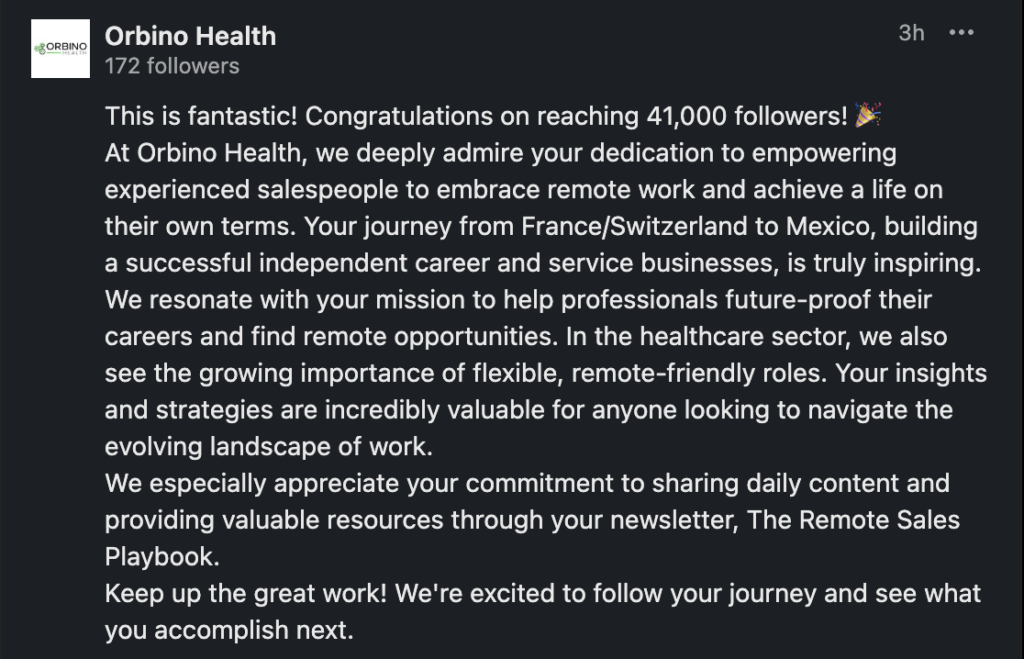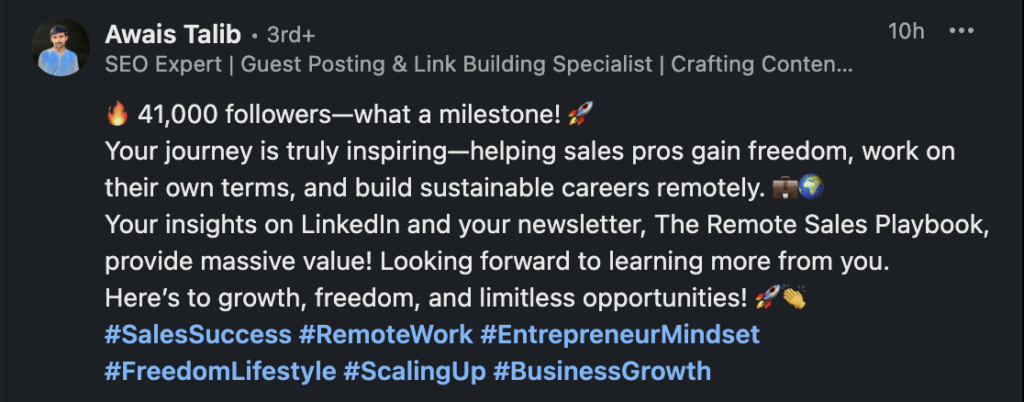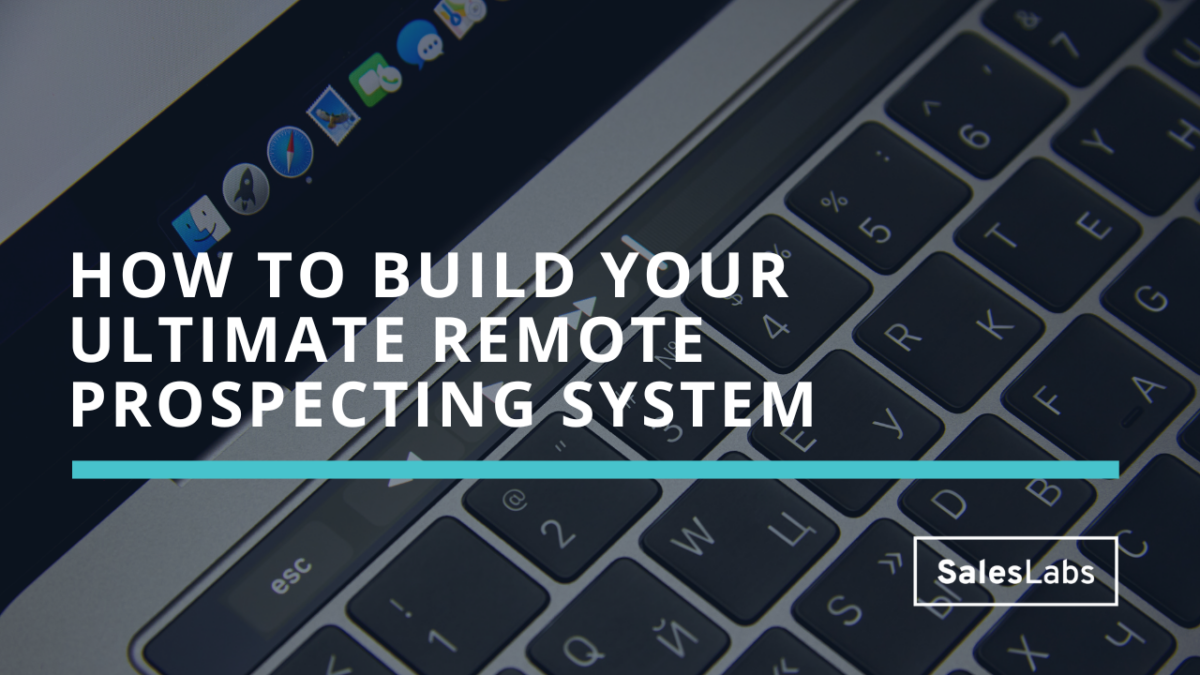Why AI is replacing the office for remote salespeople
In today’s issue, I’ll share why I think AI can (almost) entirely replace working in an office environment for remote salespeople.
I remember when I started my tech sales career, I was 24 and I had just moved to Berlin. It was back in 2015, and we were working 100% in an office. At the time, I loved it because I barely knew anything about sales, and being around my colleagues was the best way for me to learn. From running discovery calls, to listening to my colleagues close Enterprise deals, I was able to enjoy the Collective Brain of the office.
Now, imagine working remotely. You’re by yourself in your home office, Slack notifications going off every 10 seconds, and when you join your team meetings on Zoom, almost all cameras are off, and all of your colleagues are muted. You have no chance to learn from the Collective Brain of the office.
Let me show you how to solve that with AI:
The big problem with remote sales
Here’s a story for you.
My big brother used to work in the hospitality sector for 10 years before becoming an SDR for a remote tech company. He’s one of the hardest working person I know. He’s organized, he knows how to structure his day, and he is self-motivated. But he stayed in tech sales for 9 months only.
The main reason?
He felt lonely. He wasn’t able to feed of the energy of his colleagues, and he failed because he didn’t have access to the Collective Brain.
And that’s the main problem with working remotely. You don’t have any real human interaction, and it’s hard to learn anything from your colleagues when their cameras are off and their mics are on mute.
But you can solve a part of this problem with AI, here’s how:
Step 1: Explain your problem
I refer to the Collective Brain as the spontaneous knowledge that is created when groups of people work together in the same physical environment. Think about the last time you were at a team meeting, a party with friends, or simply with your family. There’s something special, some kind of energy and knowledge that is created, spontaneously.
You can use AI (ChatGPT or Claude) to emulate that knowledge, and solve problems. A good way to explain a problem is to follow this 4-step framework:
- Context: Give context about your situation, and what’s your problem
- Role: Give the AI a specific role
- Task: Give a task to the AI
- Format: Format the way the AI will ask you questions
Here’s an example I used, to help me close and important Enterprise deal at the end of the quarter:
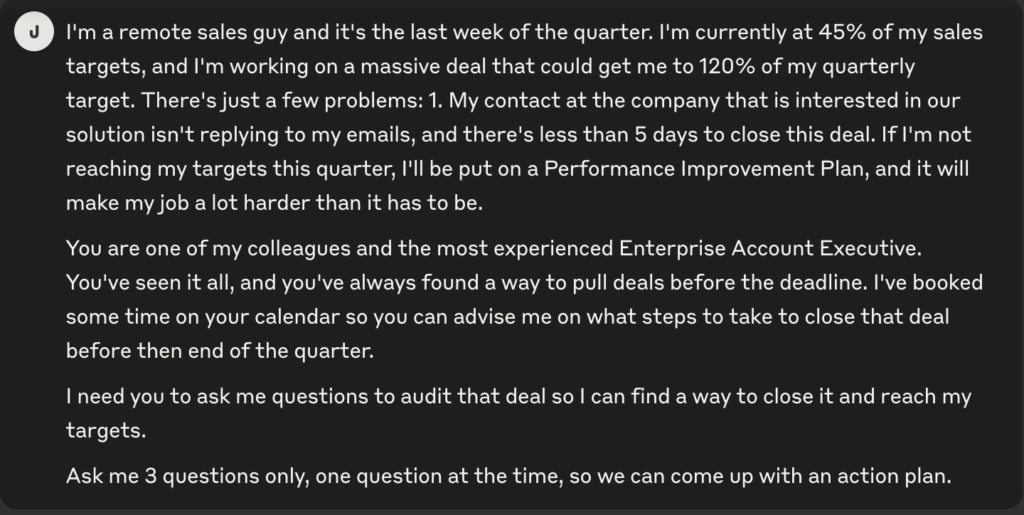
Step 2: Answer the AI’s questions
After asking this question to the AI it’s going to ask your 3 questions, one question at a time (if you formatted the questions properly). Here’s the first question I got, based, on the prompt I shared earlier, with my answer:
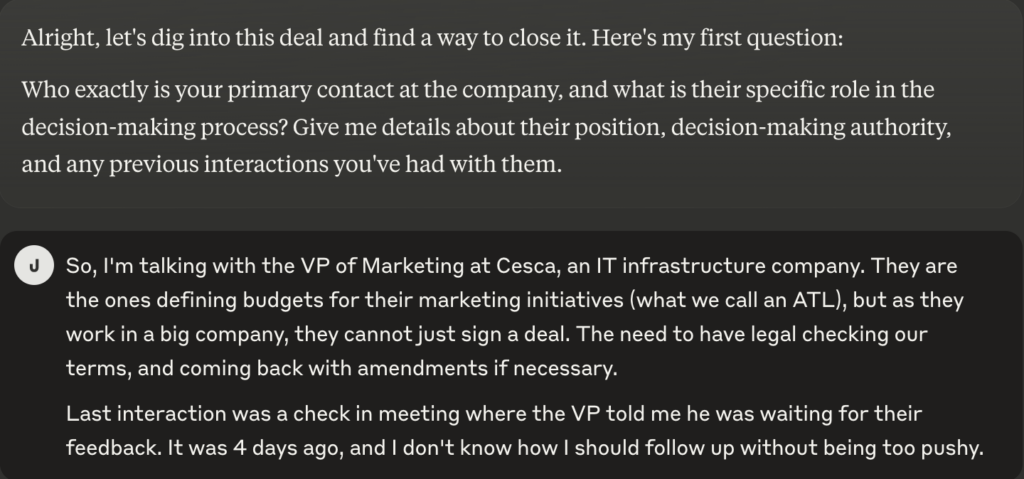
You can see I reply to Claude as if it was my colleague:
Here are the questions + my answers:

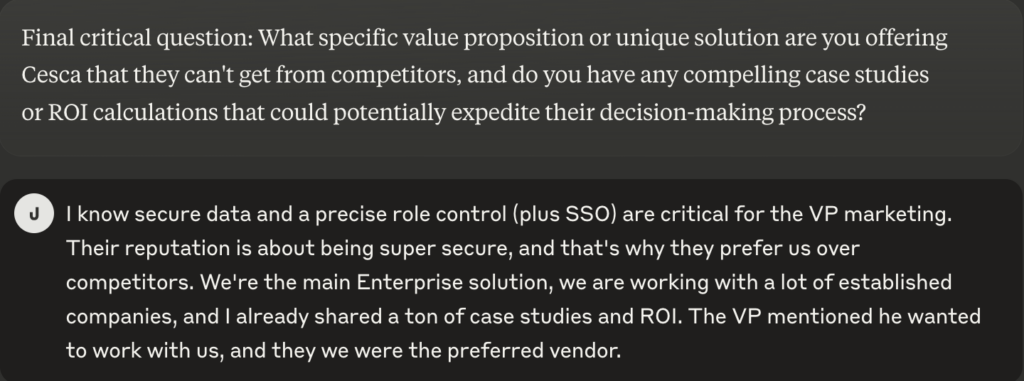
Step 3: Review and tweak your plan
Based on my answers, the AI will generate a plan to help me build a plan to close this deal before the end of the quarter. Here’s the plan:
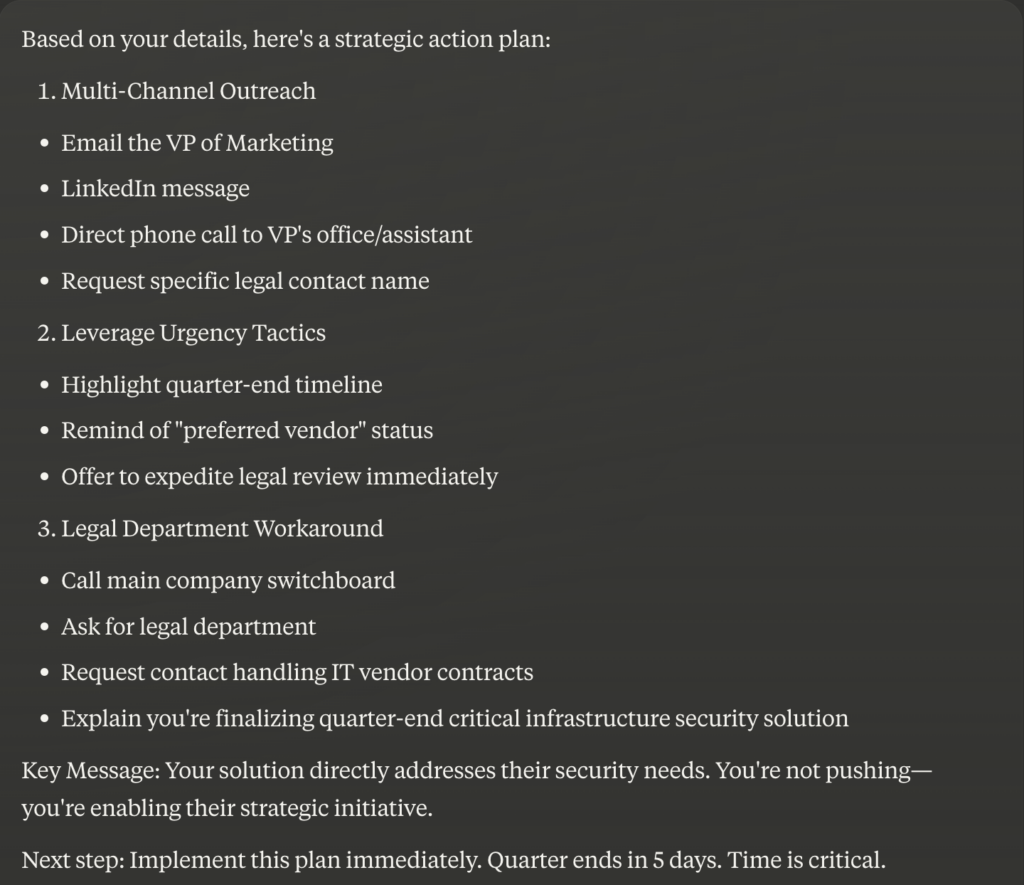
Now I can take these suggestions and tweak the plan, or start working directly on executing it.
For example, I really like the multi-channel approach. I’d go and contact the VP Marketing, offering to directly chat with the legal team to get the red-lining going faster (it work, I closed a few 6-figure deals before Christmas like that).
And this is why AI can be such a good resource to help remote salespeople emulate the Collective Brain. If you use the AI correctly, (as a coach or a colleague), it will help you build anything, based on your own reflections. You can create a plan, tweak it, and come up with ideas you didn’t know you had in your brain.
Hope this helps.
Cheers,
Thibaut Souyris
P.S. When you’re ready, here are 3 ways I can help you:
Subscribe to the Newsletter
Get my free, 4 min weekly newsletter. Used by 5.400+ salespeople to book more meetings and work when, where, and how they want.
Subscribe to the Newsletter
Get my free, 4 min weekly newsletter. Used by 5.400+ salespeople to book more meetings and work when, where, and how they want.
